TRC / ABS Master Cylinder Bleed - Written by Peter Scott at Planet Soarer |
|
|
|
Bleeding
the TRC/ABS master cylinder is quite simple with it's built in electric motor to
assist you.
This procedure improves brake pedal feel.
|
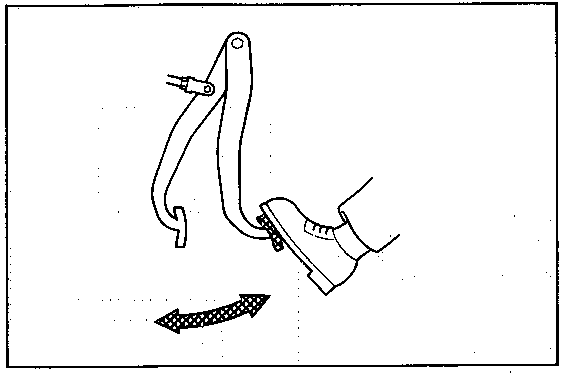
Pump Autostart |
|
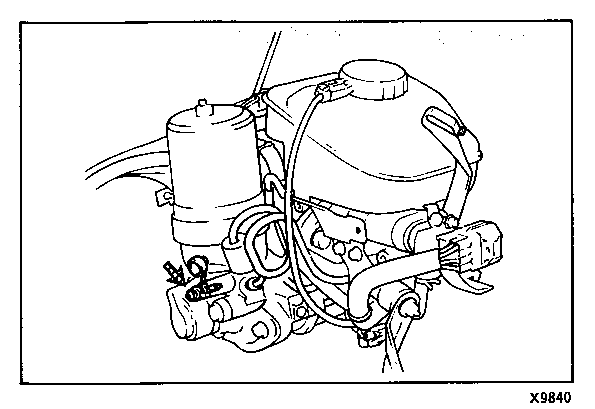 |
|
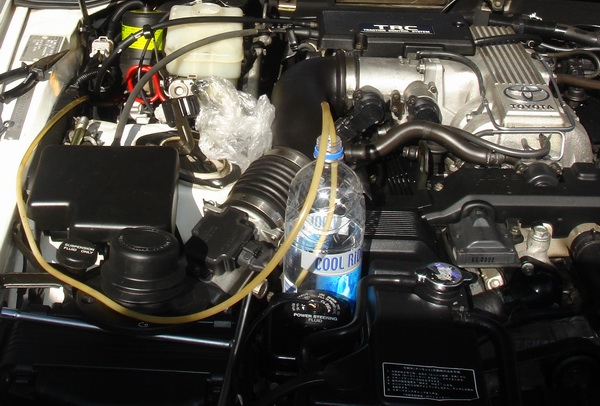 I like to set up with 2 metres of 5mm plastic hose into an old drink bottle - that way I can easily see the colour of the fluid coming out. The hose is essential - without it brake fluid would spurt everywhere damaging paint work. |
|
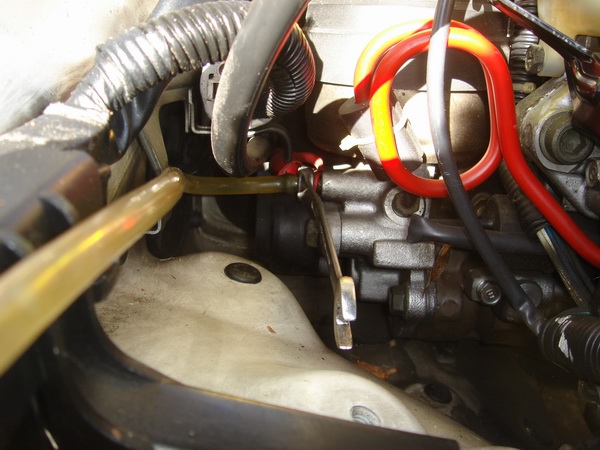 The first nipple is a bit tricky to get the hose on - I had to remove a small relay to get to it. I used an 8mm spanner to loosen the nipple. Once the nipple was cracked open
1/8 turn, I turned the ignition to "on", pressed the brake pedal
and away the electric motor It's a big master cylinder and takes a minute for the old brake fluid to pump out. Before it emptied itself I turned the car off and re-filled with clean fluid |
|
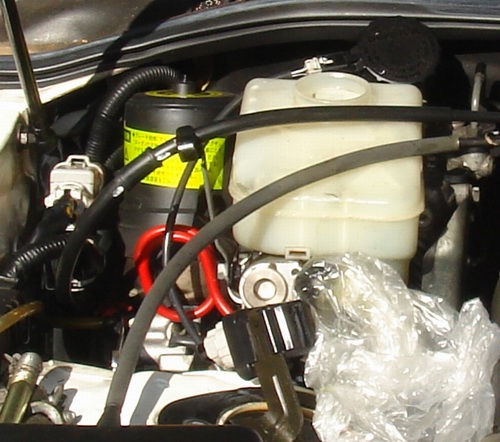 The black cylinder next to the master cylinder with the yellow sticker is a nitrogen accumulator. An electric motor pumps fluid into the accumulator storing pressure for fast operation of the traction control and ABS systems. In the case of an engine stall the brakes still have maximum power available for a few applications because of this stored pressure. By opening the first nipple, fluid is pumped out of the system instead of stored against the nitrogen gas. |
|
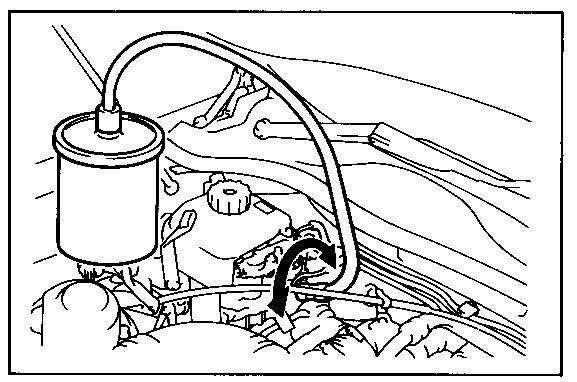
Power System Air Release |
|
| I found this second nipple quite hard to get to - it was fiddly to get the
hose on and a squeeze to then loosen the nipple with the spanner.
Once it was on
I pressed the brake pedal with the ignition to "on", the pump motor started up
and out come more old fluid. Once the electric motor starts up it keeps going by itself, until the car is turned off or the nipple is closed and the pressure builds in the accumulator. By now I had about 1 litre of old brake fluid in the bottle. Getting the second nipple is worth the effort. |
|
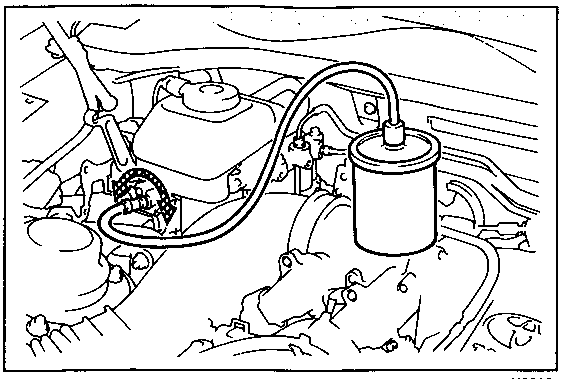 (5) Normally air is released from bleeder valve on edge (tip) of master cylinder " |
|
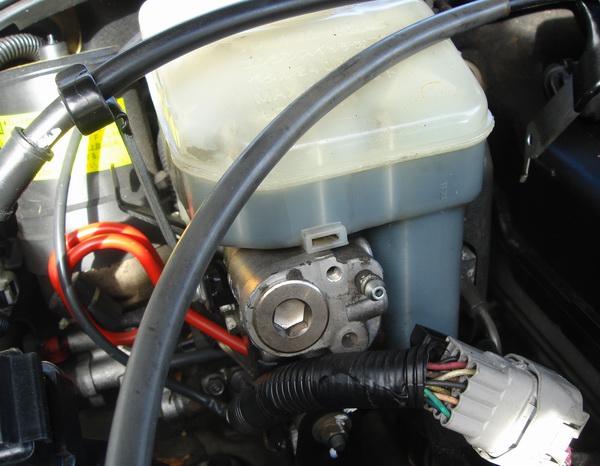 The last bleed nipple is the one on the front - I removed the couple of brackets in the way to get a clean shot at it. The electric motor doesn't effect this nipple - so I pump the pedal up and down and pushed the old fluid out manually. The 2m of plastic hose means I can do it by myself. The fluid was nice and clean by now so it didn't take long for this final master cylinder bleed. |
|
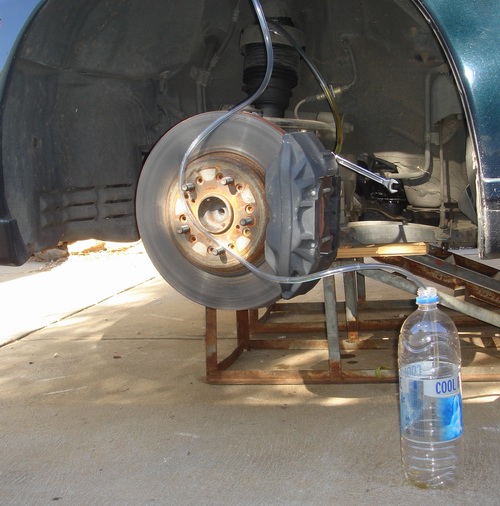 Now that the master cylinder had no air bubbles and no old fluid I bled each wheel. If I'm not in a rush sometimes I gravity bleed the system - open the
nipple and the fluid slowly Other times I'll give the brake pedal quite a few long smooth pumps to speed up the process.
|
|
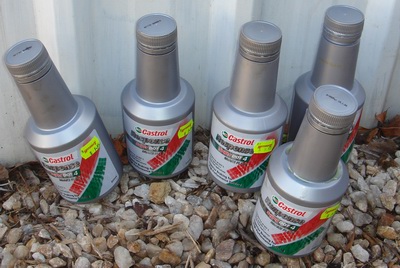 I'll use about 5 bottles of fluid (500 ml each so a total of 2.5 litres) which costs about $50. After a bleed the brake pedal is firmer - TRC master cylinders are especially prone to spongy brake pedal. I reckon it's well worth
while. I would bleed my brake system once a year on average. |
|
| The ALSC thanks Peter Scott for this well presented article. | |